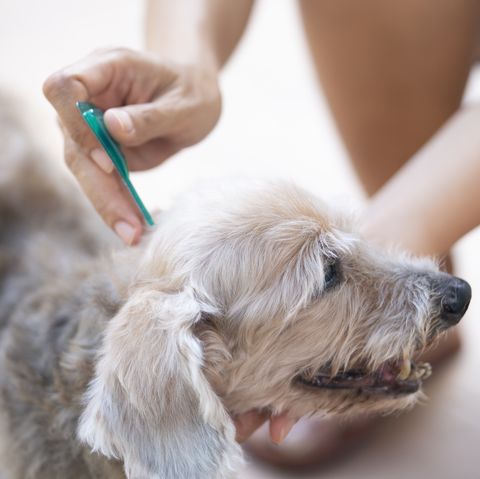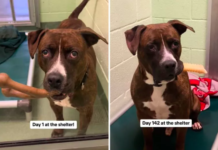Last Updated on July 2, 2021 by Fumipets
For every dog lover, it’s essential to protect your dog against fleas and ticks if he or she spends a lot of time outside since they may transmit illnesses to humans (and the various diseases that they carry). The use of flea and tick control treatments is vital not only for the comfort and health of your dog but may also reduce the risk of contracting Lyme disease or another tick-borne illness for you and your family members.
When it comes to keeping your dog healthy, there are many choices to consider, ranging from pills and chews to ointments and shampoos. These treatments differ in terms of delivery method and application frequency, so you’ll want to think about what’s best for your pet as well as your own schedule before choosing one. It’s always a good idea to consult with your veterinarian about the particular requirements of your dog, which will depend on his medical history as well as the pests that exist in your area. No matter whatever tick prevention product you use, you should always check your dog for ticks after he has spent time in the great outdoors.

Continue reading to learn about the most effective tick and flea prevention products available on the market today.
1. NexGard Soft Chew for Dogs
:max_bytes(150000):strip_icc():format(webp)/NexGardSoftChewforDogs60.1-121lbs-f692196b0ba44f0dbf87069186d24f74.jpg)
NexGard will appeal to your dog in the same way that it appeals to you since he will get his medication in the form of a delicious beef-flavoured treat every month. From there, the primary active ingredient, afoxolaner, begins to work, killing fleas and ticks, including the Lone Star, black-legged, American dog, and brown dog types, before they have a chance to lay eggs in the pet’s fur.
Nexgard has also been authorised by the FDA to aid in the prevention of infections that may lead to Lyme disease. In addition to its efficacy, the fact that the medication is given via your pup’s bloodstream has many advantages, including the fact that your dog may get wet right away and that it is safe for other dogs and small children in your home. It can only be obtained with a prescription.
2. Bravecto Chews for Dogs
:max_bytes(150000):strip_icc():format(webp)/bravecto_group-ad736c032e0b4f39992aa904d6373160.jpg)
For breeds with thick or long coats (such as collies and Shih Tzus), oral chews are a particularly excellent choice since they are more difficult to administer properly than topicals. In addition to providing up to 12 weeks of protection against fleas and ticks, each of Bravecto’s prescription-only chews begins to kill fleas in only two hours after administration. Four tick species are under their control: black-legged ticks, American dog ticks, brown dog ticks, and Lone Star ticks, among others. If you reside in an area where Lone Star ticks are a problem, you may wish to give your pet a chew every eight weeks if this is the case.
The one disadvantage of chews is that they do not destroy parasites on contact; instead, your dog must be bitten before the parasites are killed. If you live in an area where Lyme disease is common, you should consult with your veterinarian about getting your dog vaccinated.
3. Adams Plus Flea & Tick Shampoo
:max_bytes(150000):strip_icc():format(webp)/81-nlImBCEL._AC_SL1500_-d7b5434982ff4f4cb44bba0d7fc1b3ab.jpg)
This dog shampoo from Adams will kill fleas and ticks while also leaving your dog smelling fresh and clean. This product is soothing on both you and your dog’s skin thanks to the use of aloe, lanolin, coconut extract, and oatmeal in the formula—and it smells great, too. The shampoo includes an insect growth regulator (IGR), which kills and prevents the development of fleas for up to 28 days. However, you may find that you need to use it every seven to ten days for the most effective results, so use it every seven to ten days for the most effective results. The bottle should last you for quite some time since a little goes a long way with this product.
Caution: the shampoo includes pyrethrin, which is potentially harmful to cats.
4. Vet’s Best Flea & Tick Pet & Home Spray
:max_bytes(150000):strip_icc():format(webp)/VetsBestFleaandTickHomeSpray-42bb063993904d568322248f2af41aed.jpg)
If you’re concerned about putting synthetic chemicals on or in your dog, this plant-based spray may be a good option for you. With certified natural peppermint and clove essential oils, it kills fleas and their larvae as well as flea eggs, ticks, and mosquitoes as soon as they come into touch with them. When spraying your dog, be sure not to overlook the armpits and space between their toes, which are two of the most common hiding places for parasites.
It may take some trial and error to determine how often you should spray your dog; some owners report spraying their dogs daily at first, then cutting down to once a week. In addition, if your dog gets wet, you’ll need to reapply. The recipe is non-staining and will not damage your bedding or furnishings, and it is manufactured in the United States.
5. Sentry Fiproguard Plus for Small Dogs
:max_bytes(150000):strip_icc():format(webp)/SentryFipproguardPlusforDogs-2bcbfb1a1d8f4e01911b9db17ffa8397.jpg)
Flea and tick prevention medications for tiny dogs are not the same as those for large dogs, and the same is true for topical flea and tick prevention medications. This Sentry type is designed for dogs weighing between 4 and 22 pounds. It is applied to your dog’s back once every 30 days, and it is effective in killing fleas, flea eggs, flea larvae, ticks, and chewing lice on contact, as well as other parasites. It is okay for your dog to get wet after a few days after it has dried since he will not be able to lick it off.
6. Frontline Plus Flea & Tick Large Breed Dog Treatment
:max_bytes(150000):strip_icc():format(webp)/FRONTLINEPlusFleaandTickTreatmentforDogsLargeDog45-88Pounds6Doses-c2efbd67ea284f25a8bd4d7de2b9312d.jpg)
In this topical flea and tick therapy, fipronil, which is effective against adult fleas and ticks, is combined with (S)-methoprene, which is effective against flea eggs and larvae. The formula is stored in your dog’s oil glands when you open the tube, rub it between his shoulder blades, and rub it into his back. This provides long-lasting protection for a full 30 days after you snap open the tube. Your dog should remain dry for at least 48 hours after being exposed to water, but after that it is waterproof and safe to be around children and other animals. Frontline has been around for more than two decades and is highly recommended by numerous veterinarians. The big variant is designed for dogs weighing between 45 and 88 pounds.
7. Bayer K9 Advantix II Flea and Tick Prevention for Small Dogs
:max_bytes(150000):strip_icc():format(webp)/K9AvantixFleaandTick-4f4d6b0a16d342cbbbbec762add2e926.jpg)
It’s essential to check with your veterinarian before buying any flea and tick medications for pups since not all of them are appropriate for them. K9 Advantix may be used safely on puppies as early as seven weeks of age, and the small dog version is designed for canines weighing between 4 and 10 pounds in weight. In addition, the topical lasts for 30 days and kills on contact, which means that it is not necessary for fleas, ticks, and mosquitoes to bite your pup in order for it to be effective. Fleas begin to die 12 hours after the product has been applied. This product is not intended for use on cats.
What to Look for in a Flea and Tick Prevention Product
Mode of administration
Flea and tick prevention treatments are available in a variety of forms, including topicals, oral pills, shampoos, and collars, all of which are becoming popular. Topical formulations are applied to the back of your dog’s neck, while oral pills are intended to be swallowed. Oral medicines are preferred if your dog is often wet, since this may wash away topical treatments. However, oral medications are typically more costly than topical treatments. Shampoos need to be reapplied multiple times each month on average, according to the manufacturer.
Despite the fact that the Environmental Protection Agency continues to allow their usage, we are not suggesting any flea and tick control collars at this time owing to reports of health problems connected with these products.
Active ingredients
The majority of flea and tick prevention solutions include some kind of pesticide that kills the pests in question. The active ingredients in a flea/tick prevention product should be researched to see what kinds of insects they kill, if they are safe to use around children and other animals, and whether they are likely to produce unpleasant responses in your pet. Always consult your veterinarian when in question about which components will be most effective for your dog’s specific needs.
Duration
Flea and tick products are effective for varying periods of time depending on the formulation. Some need reapplication every week or more often, while others may last for many months. The frequency with which you must re-administer the treatment, as well as the amount of money you will spend on flea and tick treatments each year, will be determined by this factor, among other things.

Frequently Asked Questions
What is the best way to determine whether your dog has fleas?
There are a number of obvious indications that your dog may be infected with fleas. Whether you notice that your dog is scratching more than normal, especially around the flanks or above the tail, you should examine its coat to see if any of these tiny bugs have taken up residence there. If you do find any, you should remove them immediately. If you separate your pet’s fur, you’ll frequently be able to see “flea dirt,” which appears as small black specks or even black bugs that may run away if you don’t act quickly.
What measures can you take to prevent your dog from having fleas?
In addition to administering flea and tick prevention medication to your dog, there are a few more measures you may take to minimise the likelihood of your dog contracting fleas. Due to the fact that fleas like to dwell in shady outdoor places that include sand, leaves, or other debris, you may assist avoid flea infestations by keeping your grass trimmed short and preventing your dog from playing in areas where fleas could be hiding. You may also use diatomaceous earth to treat your house, which will aid in the killing of adult fleas.
Can most flea treatments be used on puppies?
As a general rule, pups should not be treated for fleas until they have been weaned, which is usually around seven or eight weeks of age. It’s critical to double-check the age range on the flea treatment you’re using to determine whether or not it’s safe to use on your dog. Your veterinarian will also be able to provide recommendations about the best care for your young dog.


















